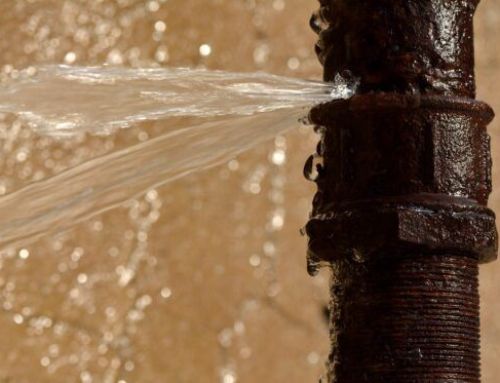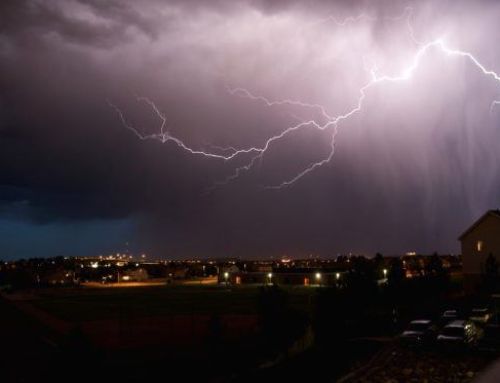According to the Federal Emergency Management Agency (FEMA), just a single inch of flood water can cause up to $25,000 of damage to your home. Thus, your efforts in flood prevention are more than worth their cost. With some neighborhoods having a high vulnerability of flooding due to severe weather events, it’s best for residents to implement flood prevention both indoors and out. The following are seven ways to get started.
1. Take Good Care of Your Sewer Line
Your sewer line carries solid waste and wastewater from your home to the municipal sewer system. If you have a septic tank on your property, your sewer line routes this effluence to your septic tank. If this line ever ruptures or develops a blockage, serious property damage will ensue.
To protect your sewer line, never do any unauthorized digging on your property. You should also clear this area of tree roots, weeds, and other aggressive growths that might enter your sewer line via tiny gaps or cracks in search of water and nutrients.
When sewer line problems are suspected due to smelly or slow-moving drains, perpetually wet, sunken spots in your yard, or a sudden proliferation of growth just above the sewer line, schedule a sewer line camera inspection right away. When sewer line blockages prevent the egress of waste and wastewater, this pathogen-riddled filth can back up into your home through all drains and connected appliances and fixtures.
2. Stay Up to Date on Home Appliance and Home System Maintenance
Among some of the top causes of residential floods are whole-house backups, toilet overflows, dishwasher malfunctions, and ruptured water heaters. Most of these events can be effectively mitigated or prevented with diligent maintenance.
Water heaters that suddenly rupture frequently have failed anode rods or massive buildups of sediment which cause extraordinary stress. With preventative maintenance, plumbers can flush these mineral build-ups out and replace worn and damaged components before disaster strikes.
Scheduling annual, whole-house plumbing inspections is a great way to stay on top of your water heater and any structural or functional decline that it’s experiencing. During these visits, plumbers can also identify weak or outdated pipes, slow and hidden leaks, excessively high water pressure, and other problems that could wind up costing you a veritable fortune in the long run.
In fact, taking good care of all of your home appliances and home systems will reduce your risk of sudden failure and the equally sudden in-flow of water.
3. Install a Sump Pump
When you live in a region that’s either flood-prone or known to have the occasional flood, it makes good sense to install around-the-clock protection for low-lying areas. This is exactly what a sump pump provides. When flood waters enter basements due to poor drainage or a strong deluge, sump pumps immediately kick into action to route this water back out of the building.
4. Incorporate Landscaping Elements That Support Good Drainage
Aesthetics are often the primary focus when homeowners plan their landscape designs. If you’ve decided to landscape your yard without the help of a professional, be sure to include elements that support good drainage and prevent soil erosion.
Native plant species do both of these things. They also remain hearty and robust with minimal watering and care. Other flood prevention strategies that you can leverage outdoors include:
- Regrading your yard to create a sharper slope away from your home’s foundation
- Adding mulch to low-sitting garden areas to hold rainwater and snow-melt
- Adding drainage to driveways and other paved areas
In flood-prone regions, homeowners are also advised to avoid cutting their lawns too short. Planting grass and maintaining it at a moderate height will encourage the development of strong root systems and prevent water from pooling in your yard.
5. Maintain Your Roof and Replace It When Needed
Surprisingly, much of a home’s flood risk originates from its topmost structure rather than its basement, appliances, plumbing, or floors. This is especially true for homes with incredibly ill-maintained roofs. You should have your roof professionally inspected annually. You should also be on the lookout for signs that your roof has either reached the end of its lifespan or is failing prematurely, including:
- Separation at the roof’s valleys
- Shingle granules in your gutters or at the base of your downspouts
- Failing seals around skylights, chimneys, or exhaust fans
- Curling shingles
- Soft or sunken spots
Roofs that feel spongy or springy when pressure is applied often have rotting wood at their substrate or the underlying framing. Neglecting a roof until it utterly fails can leave you with an unsuspected influx of water from above. Moreover, even if sections of your roof never actually collapse, the resulting moisture damage will increasingly diminish the building’s value via mold infestation, pest problems, warped or bowed building materials, and more.
6. Pay Attention to What’s Going Down Your Drains
Investing in good drain covers is a great way to maintain your sewer line. These simple and low-cost components prevent things like toothbrushes, razors, shampoo bottle caps, and bath-time toys from entering your plumbing system. However, it’s also important to pay careful attention to what people in your household are intentionally putting down your drains.
For example, it’s never a good idea to send so-called “flushable” wipes down your toilets. Even the very best of these products don’t rapidly degrade in water like tissue or toilet paper do. They should always be disposed of in the trash rather than flushing them.
In the kitchen, avoid putting grease or oils down your drains even after they’ve completely cooled. Putting your used grease and oils in sealed containers and then depositing them in the trash will protect both your plumbing system and the local water supply.
For added flood prevention, schedule professional drain cleaning service every three to five years. Hydro-jetting and hydro-steaming services break down build-ups of soap scum, hair, and other elements so that wastewater continues to flow away from the home unobstructed.
7. Know How to Respond in the Event of a Flood
Despite all of their best efforts, there are some residential flood events that homeowners simply cannot avoid. If you have a flood in your home, knowing how to respond can greatly limit the amount of damage sustained and the time and money that’s needed to repair it.
For floods that originate from damaged appliances and fixtures or faulty home systems, it’s important to turn the water off. Each tap should have an emergency shut-off valve just below or behind it. Make sure that you know where these valves are and how to use them. You should also know how to turn your home’s water supply off at the water main.
Protecting your safety is always of the utmost importance. Whenever there’s standing water, it’s best to turn the electricity off too. If you cannot do so safely, exit the building until your utility company, plumber, or other licensed professional can do it for you.
According to the Centers for Disease Control (CDC), mold spores begin forming within just 48 hours of a flood event. As such, you should schedule water damage restoration services right away. Simply suctioning up standing water with a shop-vac isn’t enough. Even when flooring and baseboards are visibly dry, there’s still plenty of trapped water within the surrounding building materials. We offer dehumidifier and fan rentals for completely drying this trapped moisture out.
Ultra violet (UV) sanitization services and professional odor removal will keep your home from looking worse-for-the-wear and smelling musty. Best of all, together, they’ll eliminate the many harmful bacteria, fungi, and other pathogens that could cause serious problems for both buildings and building residents if left unchecked.
We proudly serve homeowners throughout many areas. When major weather events or home services and appliances cause flooding, we’re here to help.
In addition to odor control, UV sanitization, and equipment rentals, we also supply attic stain removal, drywall repairs, and painting services. Call Pur360 today to schedule an appointment

